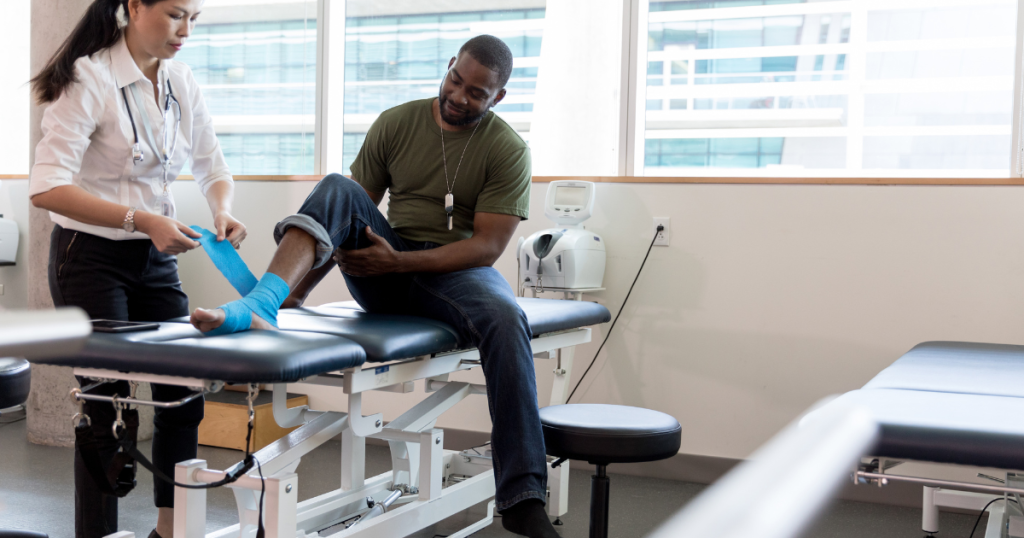Applied Kinesiology (AK) is a holistic health approach that combines principles from chiropractic care, muscle testing, nutrition, osteopathy, and other fields. Practitioners use AK to assess and treat imbalances in the body. They identify underlying issues by analyzing muscle function and related organs, glands, and bones.
These issues may cause health problems. This article will explore the principles, history, techniques, benefits, and joint conditions treated in Applied Kinesiology and cover what patients can expect during a session.
Understanding the Principles of Applied Kinesiology
Applied Kinesiology’s core concept is that the body is a complex interconnected system. Practitioners believe that imbalances in one area can affect other areas, leading to various health issues. Practitioners assess muscle strength and weakness to gain insights into the body’s energy flow and identify areas that require attention.
Through muscle testing, Applied Kinesiology practitioners believe they can tap into the body’s innate wisdom and gather valuable information about physical, chemical, and emotional factors contributing to health problems. This information then guides the development of a personalized treatment plan tailored to each individual’s unique needs.
One fascinating aspect of Applied Kinesiology is the incorporation of Chinese medicine principles. Practitioners may use techniques such as acupressure points or meridian therapy to help restore balance to the body’s energy flow. AK offers a comprehensive approach to health and wellness by combining Western anatomical knowledge with Eastern holistic practices.
Furthermore, Applied Kinesiology is not limited to physical health concerns. Practitioners also consider the impact of nutritional deficiencies, allergies, and emotional stress on the body’s well-being. This holistic approach addresses the root causes of health issues rather than just treating symptoms, promoting long-term healing and vitality.
The History and Development of Applied Kinesiology
The roots of Applied Kinesiology date back to the 1960s. Dr. George Goodheart, a chiropractor, made a groundbreaking discovery that revolutionized holistic healthcare. He observed a correlation between muscle weakness and organ dysfunction. This led him to explore the connections between the body’s muscular, skeletal, and neurological systems. This pivotal moment marked the inception of Applied Kinesiology (AK) and laid the groundwork for a new healthcare paradigm.
As he continued his research, Dr. Goodheart developed a comprehensive assessment and treatment system. He integrated principles from chiropractic, osteopathy, and traditional Chinese medicine. This innovative approach addressed musculoskeletal issues and explored the underlying causes of health imbalances. It emphasized the interconnectedness of the body’s systems.
Applied Kinesiology has evolved significantly over the years. Dedicated practitioners have guided its refinement and advancement. Today, certified Applied Kinesiology practitioners undergo rigorous training. They master the intricate techniques and methodologies of this holistic modality. By combining manual muscle testing, nutritional counseling, and structural alignments, AK practitioners offer a unique perspective on health and wellness. This approach continues to resonate within the chiropractic community and beyond.
How Applied Kinesiology Differs from Traditional Chiropractic Care
While both Applied Kinesiology and traditional chiropractic care strive to improve overall health and well-being, there are key differences between the two approaches. Traditional chiropractic care primarily focuses on the musculoskeletal system, particularly the spine, and utilizes manual adjustments to correct misalignments.
On the other hand, Applied Kinesiology integrates aspects of traditional chiropractic care along with interventions typically associated with other allied health professions. It addresses structural issues and considers the influence of nutrition, emotions, circulation, and other factors on health. AK practitioners use muscle testing to assess the body’s response to specific stimuli, including nutritional supplements, exercises, and emotional stressors, to inform their treatment recommendations.
Traditional chiropractic care focuses mainly on the physical aspects of the body. Chiropractors use their hands to manually adjust the spine to restore proper alignment and alleviate pain. This approach has been proven effective in treating conditions such as back pain, neck pain, and headaches.
Applied Kinesiology takes a broad view of health, recognizing that the body is a complex system with various factors contributing to imbalances and discomfort. By incorporating muscle testing, AK practitioners may be able to identify structural issues, nutritional deficiencies, emotional stressors, and even energetic imbalances.

The Benefits of Applied Kinesiology for Patients
Applied Kinesiology offers numerous potential benefits for patients seeking holistic healthcare options. By addressing imbalances in the body, AK aims to promote optimal health and well-being in a natural and non-invasive way. Some potential benefits of Applied Kinesiology include:
- Improved overall body function: By identifying and addressing underlying imbalances, AK can help improve the functioning of various systems in the body, leading to better overall health.
- AK offers relief from pain and discomfort by employing structural adjustments, nutritional support, and emotional balancing. This approach enables individuals to achieve a higher quality of life with less pain and discomfort.
- Enhanced energy levels and vitality: By optimizing the body’s systems and addressing deficiencies or imbalances, AK can help boost energy levels and restore vitality.
- Quicker recovery from injuries: Applied Kinesiology can aid in the healing process by identifying and addressing any underlying factors hindering recovery, allowing individuals to bounce back faster.
- Better digestion and nutrient absorption: By considering the role of nutrition in health, AK can help improve digestion and nutrient absorption, ensuring that the body receives the necessary building blocks for optimal function.
Moreover, Applied Kinesiology empowers patients by providing them with valuable insights into their own health. By actively participating in their treatment plan, individuals can better understand their body’s needs and make informed choices to support their well-being.
While traditional chiropractic care focuses primarily on the physical aspects of health, Applied Kinesiology helps practitioners to take a holistic approach, considering the interconnectedness of the body, mind, and emotions. By addressing imbalances in all these areas, AK aims to promote optimal health and well-being for its patients.
Looking for an Applied Kinesiologist near Smiths Falls, Ontario? Let’s get in touch!



